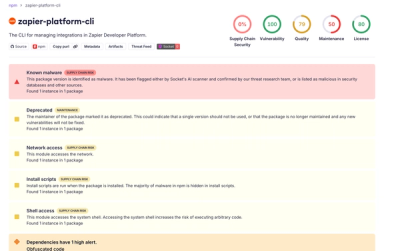This package provides a way to bundle an astilectron app using the bootstrap.
Check out the demo to see a working example.
Installation
Run the following command:
go get -u github.com/asticode/go-astilectron-bundler/...
Build the binary
Run the following command:
go install github.com/asticode/go-astilectron-bundler/astilectron-bundler
Configuration
astilectron-bundler uses a configuration file to know what it's supposed to do.
Basic configuration
Here's the basic configuration you'll usually need:
{
"app_name": "Test",
"icon_path_darwin": "path/to/icon.icns",
"icon_path_linux": "path/to/icon.png",
"icon_path_windows": "path/to/icon.ico"
}
It will process the project located in the current directory and bundle it in the output dir for your os/arch.
Bundle for specific Astilectron and/or Electron versions
The following customization can be made to bundler.json
version_electron - version of electron, defaults to the value specified in the go-astilectron version you're usingversion_astilectron - version of astilectron, defaults to the value specified in the go-astilectron version you're using
Bundle for other environments
You can bundle your project for multiple environments with the environments key:
{
"environments": [
{"arch": "amd64", "os": "darwin"},
{"arch": "amd64", "os": "linux"},
{
"arch": "amd64",
"os": "windows",
"env": {
"CC": "x86_64-w64-mingw32-gcc",
"CXX": "x86_64-w64-mingw32-g++",
"CGO_ENABLED": "1"
}
}
]
}
For each environment you can specify environment variables with the env key.
Adapt resources
You can execute custom actions on your resources before binding them to the binary such as uglifying the .js files with the resources_adapters key:
{
"resources_adapters": [
{
"args": ["myfile.js", "mynewfile.js"],
"name": "mv"
},
{
"args": ["-flag", "value", "mynewfile.js"],
"name": "myawesomebinary"
}
]
}
All paths must be relative to the resources folder except if you provide a dir option (a path relative to the resources folder) in which case it will be relative to that path.
Build flags
You can pass arbitrary build flags into the build command with the build_flags key:
{
"build_flags": {
"gcflags": "\"all=-N -l\""
}
}
Custom paths
You can set the following paths:
input_path: path to your project. defaults to the current directorygo_binary_path: path to the go binary. defaults to "go"output_path: path to the dir where you'll find the bundle results. defaults to current directory/outputresources_path: path where the resources dir is and will be written. path must be relative to the input_path. defaults to "resources"vendor_dir_path: path where the vendor dir will be written. path must be relative to the output_pathworking_directory_path: path to the dir where the bundler runs its operations such as provisioning the vendor files or binding data to the binary
Adapt the bind configuration
You can use the bind attribute to alter the bind configuration like so:
{
"bind": {
"output_path": "path/to/bind/output/path",
"package": "mypkg"
}
}
output_path: path to the directory where you want bind files to be created. defaults to the current working directorypackage: the package name to use for the bind files. defaults to "main"
When you specify an output_path, the package will probably need to be set.
Info.plist generation from the bundler configuration file property
You can add custom Info.plist configuration to the bundler.json:
{
"app_name": "Best App",
"icon_path_darwin": "resources/icon.icns",
"info_plist": {
"CFBundlePackageType": "APPL",
"CFBundleInfoDictionaryVersion": "6.0",
"CFBundleIconFile": "icon.icns",
"CFBundleDisplayName": "Best App",
"CFBundleExecutable": "app_binary",
"CFBundleIdentifier": "com.company.BestApp",
"LSUIElement": "NO",
"LSMinimumSystemVersion": "10.11",
"NSHighResolutionCapable": true,
"NSAppTransportSecurity": {
"NSAllowsArbitraryLoads": true
}
}
}
Usage
If astilectron-bundler has been installed properly (and the $GOPATH is in your $PATH), run the following command:
astilectron-bundler -c <path to your configuration file>
or if your working directory is your project directory and your bundler configuration has the proper name (bundler.json)
astilectron-bundler
Output
For each environment you specify in your configuration file, astilectron-bundler will create a folder <output_path you specified in the configuration file>/<os>-<arch> that will contain the proper files.
Ldflags
astilectron-bundler uses ldflags when building the project. It means if you add one of the following variables as global exported variables in your project, they will have the following value:
AppName: filled with the configuration app nameBuiltAt: filled with the date the build has been done atVersionAstilectron: filled with the version of Astilectron being bundled/usedVersionElectron: filled the version of Electron being bundled/used
You can use the following to alter the Ldflags behavior:
{
"ldflags_package": "some/path/to/pkg"
}
ldflags_package: which local package these variables exist in. defaults to bind's package value (for backwards compatibility)
If you need to add more flags yourself, like for a version number, add something
like this to your astilectron-bundler command: -ldflags X:main.Version=xyzzy.
If you need to add multiple flags you can pass -ldflags multiple times, with
multiple values split on commas, like this:
-ldflags X:main.Version=xyzzy,main.CommitCount=100 -ldflags race
That would set two variables and enable the race detection.
(in either case, make sure to substitute main with the package where your Version/CommitCount/etc. variables exist)
Commands
Only bind data: bd
Use this command if you want to skip most of the bundling process and only bind data/generate the bind.go file (useful when you want to test your app running go run *.go):
astilectron-bundler bd -c <path to your configuration file>
Clear the cache: cc
The bundler stores downloaded files in a cache to avoid downloading them over and over again. That cache may be corrupted. In that case, use this command to clear the cache:
astilectron-bundler cc
Frequent problems
"xxx architecture of input file `xxx' is incompatible with xxx output"
When building for linux you may face an error looking like this:
FATA[0009] bundling failed: bundling for environment linux/amd64 failed: building failed: # github.com/asticode/go-astilectron-demo
/usr/local/go/pkg/tool/linux_amd64/link: running gcc failed: exit status 1
/usr/bin/ld: i386 architecture of input file `/tmp/go-link-275377070/000000.o' is incompatible with i386:x86-64 output
collect2: error: ld returned 1 exit status
Thanks to this comment, you need to add the ldflags key to your bundler.json with the value {"linkmode":["internal"]}.



